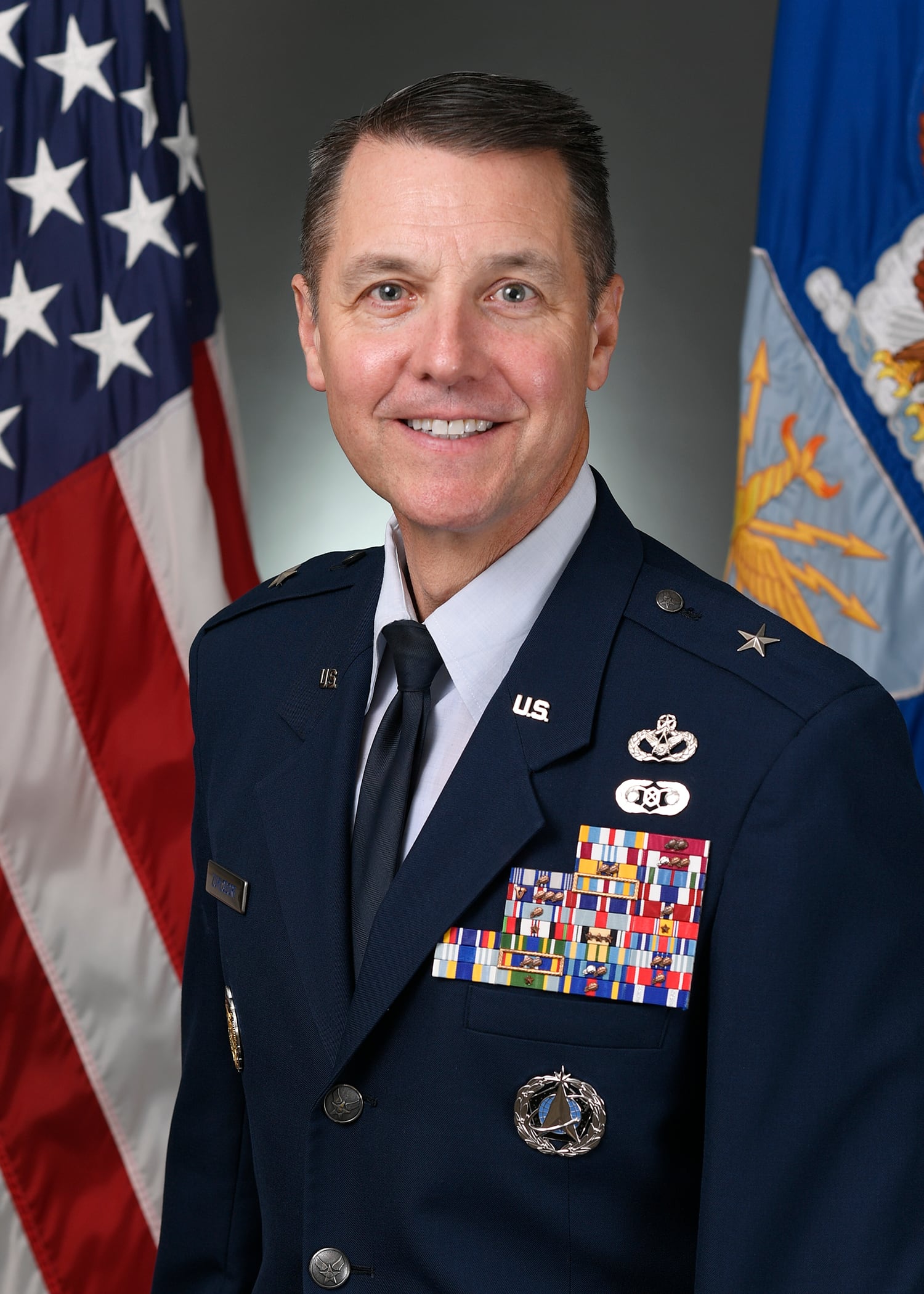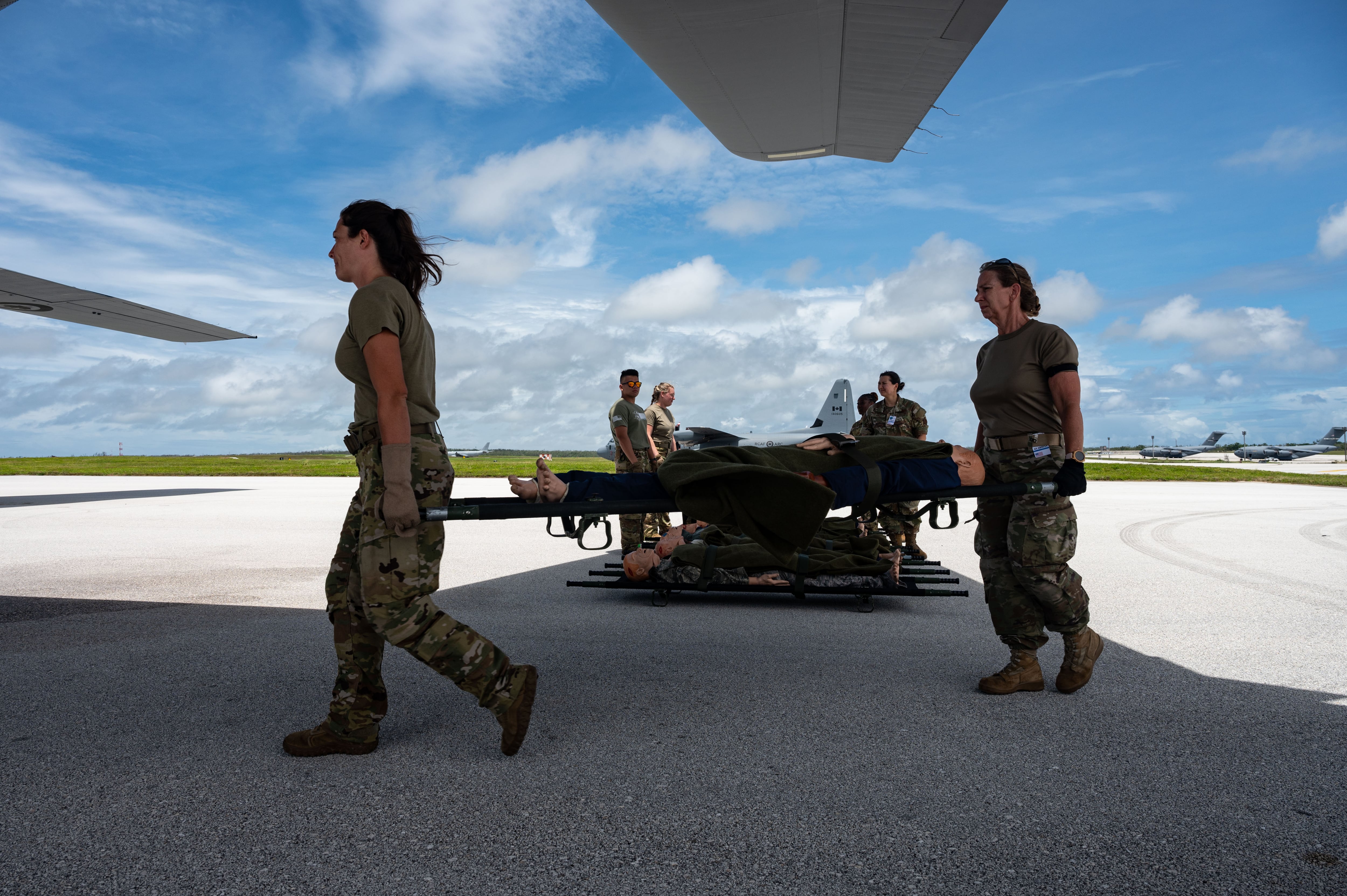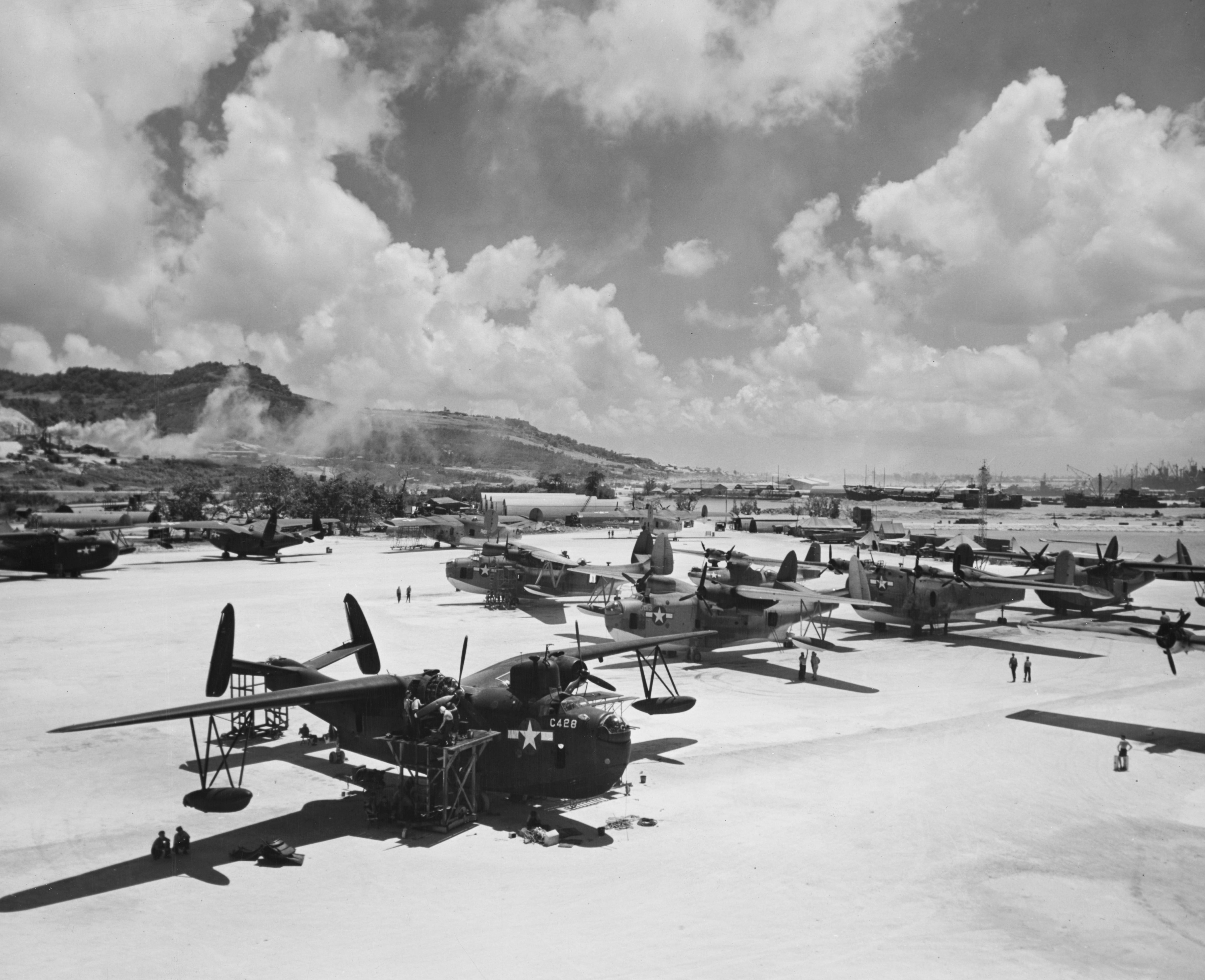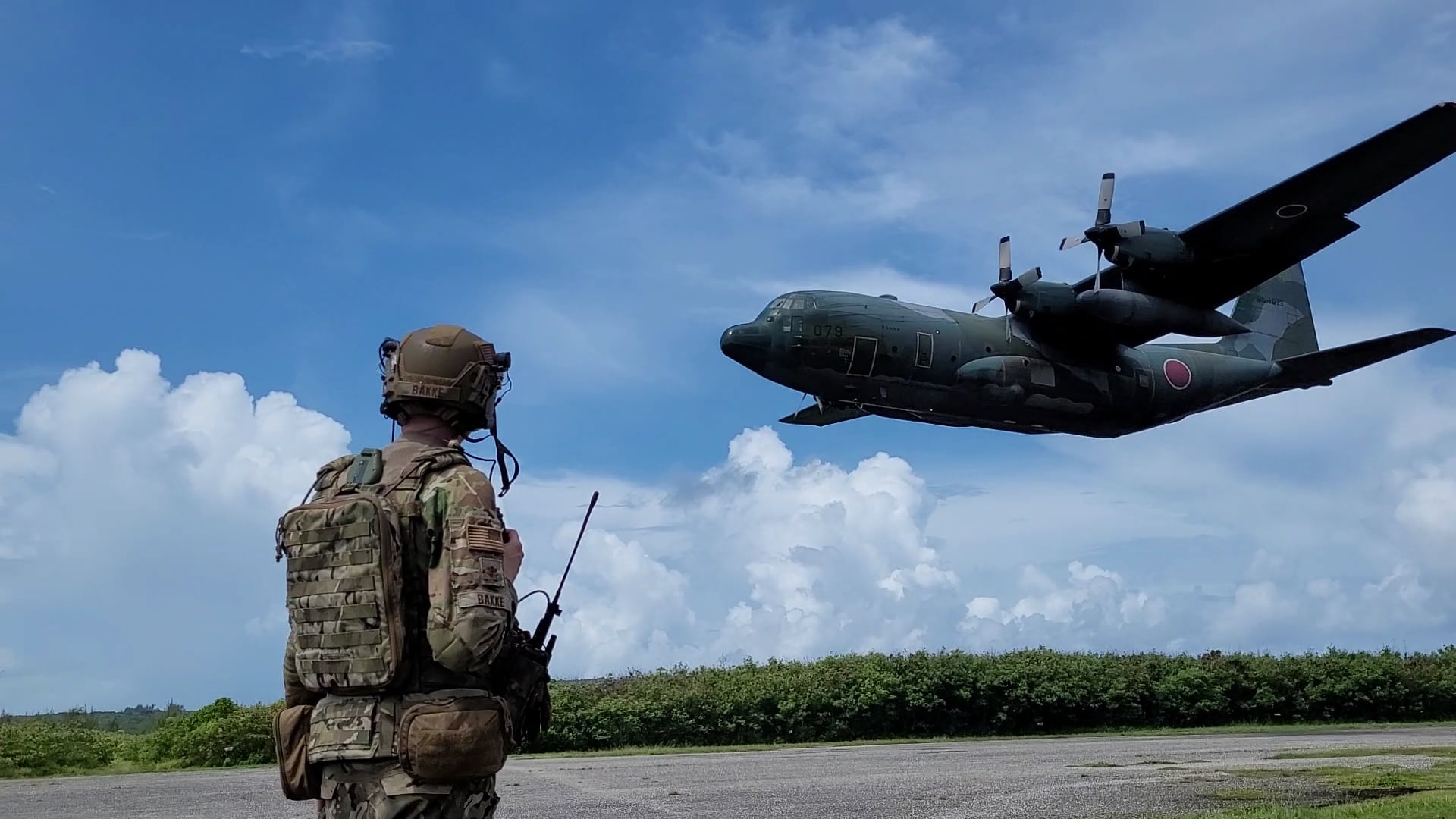After decades of relying on major military hubs from Hawaii to South Korea, the Pentagon is laying the groundwork for more dispersed operations across the Pacific region.
Brig. Gen. Mike Zuhlsdorf is a key player in those discussions. He serves as the deputy director for resource integration under the Air Force’s logistics, engineering and force protection branch.
As other defense officials negotiate with foreign leaders for access to bare-bones airfields and more established bases overseas, it’s Zuhlsdorf’s team that is figuring out how to turn those sites into valuable Air Force lily pads in a maritime-dominant region for the decades ahead.
Zuhlsdorf spoke to Air Force Times at the Pentagon on Dec. 15. This interview was edited for length and clarity.
Is the Air Force talking to other countries about using foreign bases that already exist, or are you considering building new sites?
We are not putting in new bases. These are bases and airfields that we’ve had since World War II, where we were able to hopscotch across the Pacific to ultimately get close enough to Japan. There are a lot of airfields like that, whether it’s in the first island chain — Japan down through the Philippines — or the second island chain, near Guam and Tinian.
We’re talking about renovating, rejuvenating and rehabilitating. We will make sure the pavement is still viable, trim back the vegetation where the jungle has encroached on the runway, and set up the basic essentials that we need in the event that we need to flush aircraft from a hub into these spokes, keep them safe and then turn them.

What do we need? Things like fuel; major aircraft parts that six to 12 airmen might be able to fix there; maybe some munitions [and airfield repair resources]; the essential lighting or navigational systems for nighttime operations. A little bit of base air defense might be part of that, or camouflage, concealment and deception. Almost all the hubs will have a command, control and communication system that will fly in with them so that we can maintain connectivity to the mothership at all times.
We are working with allies and partners. Pacific Air Forces has identified airfields that we want to invest in, and they’re going to work with the Philippines and Australia to do that. We are teaming with them on some projects that will allow us to get fuel out there, some munitions capability and other long-range transport aircraft that would come in and be able to resupply.
Which existing airfields are currently on the list?
There are more in the second island chain that we are identifying. There are additional airfields that are in Guam and a few in the first island chain that we’ll eventually get to.
What we’re trying to do is nail down access and overflight stuff before a formal announcement would come out. Those that have been in the press are the ones where we’ve already teamed with those countries. We are working with other allies and partners in the area to secure that very critical access, overflight and basing.
[Editor’s note: A spokesperson for the Air Force’s international affairs branch declined to provide specifics about which countries the U.S. is in talks with to host air operations abroad.]
Will the Air Force expand Andersen Air Force Base on Guam or other areas on the island?
We have projects for some hangars that are going in at Andersen, and at some of the chosen hubs we want to operate out of, maybe a spoke or two — wherever we decide is optimal. We’re looking to maybe throw up a shelter system that allows us to safeguard critical equipment. We need to take into account the sustainment of all that equipment we pre-position, and so we will want to put those into a controlled-environment facility so that when we need it, it’ll operate as advertised.

We’re also thinking about protecting those hubs and spokes so that the airmen, soldiers, sailors, Marines and guardians that we’re going to send out there will be as safe as possible. There’s a big threat from ballistic missiles and hypersonic missiles. We’re trying to make sure those airmen can turn those aircraft as advertised.
None of us who wear this uniform are looking for war. Our job is to be prudent with taxpayer dollars, and what the American people want from us is to plan.
What’s the timeline to open these sites? How are you phasing them in?
Two to three future years defense programs (FYDP). We are working through [which sites should be prioritized].
Is 10-15 years too long?
We’re going to see concrete stuff within a [five-year] FYDP and it will continue to manifest through that time period. We’ve got some weapon systems in the queue — Next Generation Air Dominance, collaborative combat aircraft. It’ll happen in that window.
What are you learning from Air Force spokes across Europe that you’ve used in partner countries since Russia’s full-scale invasion of Ukraine in February 2022? How are you applying those lessons to the Pacific?
This is a unique opportunity for us. We’ve been in U.S. Central Command, and being able to move pieces, parts, munitions, aircraft, personnel and everything like that has been relatively uncontested. Yes, the Army has had some challenges there when you talk about the main supply routes, but generally it was not a contested environment. Ukraine is a contested environment, and logistics lessons that we learn are invaluable.
What are the critical pieces and parts that they need? How did they get these parts from location X to location Y? Did they use this system or that system? How did they pull the data? We are rapidly getting to a data analytics framework that’s going to allow us to visibly see what supplies and equipment we need. We’re going to be able to throw that up into a basing and logistics data analytics environment that’s going to allow us to, as logisticians, figure out where we need to put the next aircraft part or the next load of fuel.
Russia and Ukraine have a lot of small unmanned aerial systems that are impeding each other’s progress. How are they tracking those systems? How are they taking those systems down? How are they doing air defense for air bases? Those lessons are being gathered up.
What is the proposed cost for Pacific basing projects in fiscal 2025?
We’re working through FY25. That’s part of the resourcing our senior leaders are churning through right now.
There hasn’t been a profound change in counter-drone technology over the past several years. Where does that capability stand and what would you like to see?
We are probably still nascent. We literally just had conversations about this — within the last four or five months — about expanding and investing more in that very important battlespace. There’s a lot of research and a lot of dollars that are being applied to that problem set. You see that coming into play not only in the Ukrainian-Russian war, but also now with Hamas and Israel.

Are small drones a threat in the Pacific, despite the region’s significant size?
These are all islands, and they all have an indigenous population. You can rest assured that there’s probably people who don’t like the United States on those islands. Some of these smaller systems could absolutely impact an air tasking order. To protect the integrity of that air tasking order, we need to think through how we can get at that small threat, while other people are thinking through those ballistic missiles and those hypersonic missiles.
It is a full-spectrum air defense platform for an air base that we’re looking at, along with the camouflage, concealment and deception program, electronic warfare, and all these bits and pieces.
What are the main hurdles to achieving this vision?
One of the big problems is not having a budget. When you think about procurement lines that we need to stand up and invest in, we absolutely need Congress’ help in getting a budget passed so we can get the capabilities that we know we need.
There’s always the joint interoperability piece that we are yearning for, and the ability to share information with our allies and partners. We’re trying to work a little bit more aggressively on what information we can share with them, and what tactics, techniques and procedures we might be able to share. We’ve had success in Australia recently on some refueling efforts with the F-35 fighter jet. That’s a big success.
We’re breaking down barriers where we can to make sure that we’ve got the necessary capability and that everybody understands what that is. We’re sending people over to Japan right now to work with them even closer on exercises and on different weapons systems. Those are big barriers, but we’re overcoming them.
The threat that’s been posed to us over the last three or four years from the People’s Republic of China has galvanized a lot of allies and partners of U.S. Indo-Pacific Command. There’s an impetus for us to work even closer together moving forward.
What near-term spending is on the horizon?
We’re investing in pre-positioned assets. That includes the kits with the tools and equipment that are necessary to do the maintenance on those aircraft. We’re investing in fuel bladders, in the renovation of the airfields, and in the airfield damage and repair equipment.
Think about heavy equipment — mobile aircraft arresting systems. Some of that stuff we have not put on a production line in a long time. We are investing in production lines to get that built and put in place within this Future Years Defense Program. We’re investing in communication equipment that will allow us to do command and control.
We’re investing in our airmen with multi-capable airman training. The Air Force Expeditionary Center at Joint Base McGuire-Dix-Lakehurst, New Jersey, is putting together the curriculum that’s necessary for us to train our airmen and get them ready to have a civil engineer do not just civil engineering work, but maybe change a tire or load a bomb or refuel a jet or protect the base. It’s about investing in all those things that are necessary for us to get at a threat that, frankly, we just haven’t had to think about as much in the last 30 years.
When I came in, it was the Soviet Union, it was protecting the Fulda Gap in Germany. We learned a lot of skills that were multi-capable back in the late 1980s that we are now dusting off. We’re going to apply that to this near-peer fight.
Rachel Cohen is the editor of Air Force Times. She joined the publication as its senior reporter in March 2021. Her work has appeared in the Washington Post, the Frederick News-Post (Md.), Air and Space Forces Magazine, Inside Defense, Inside Health Policy and elsewhere.





